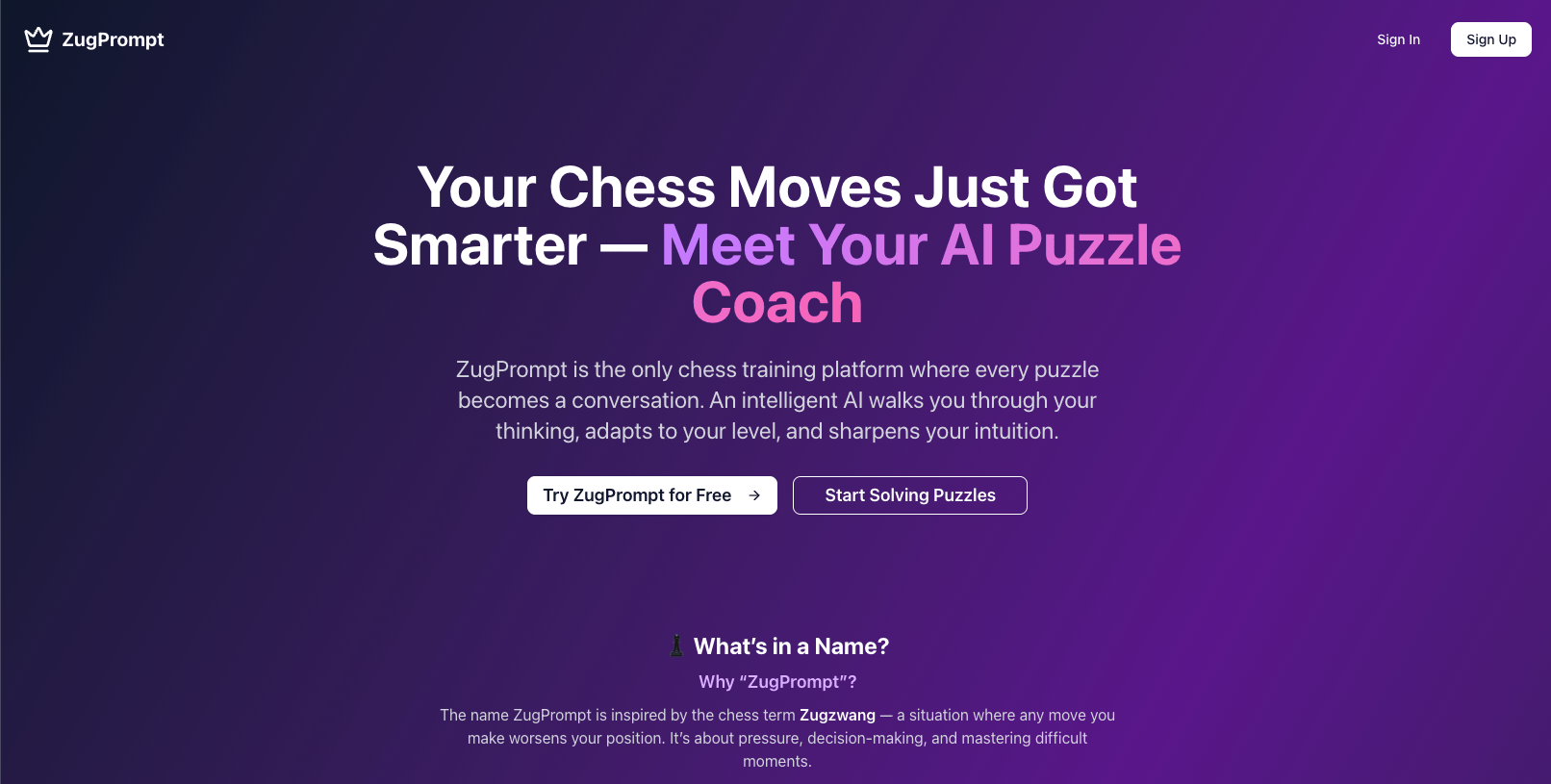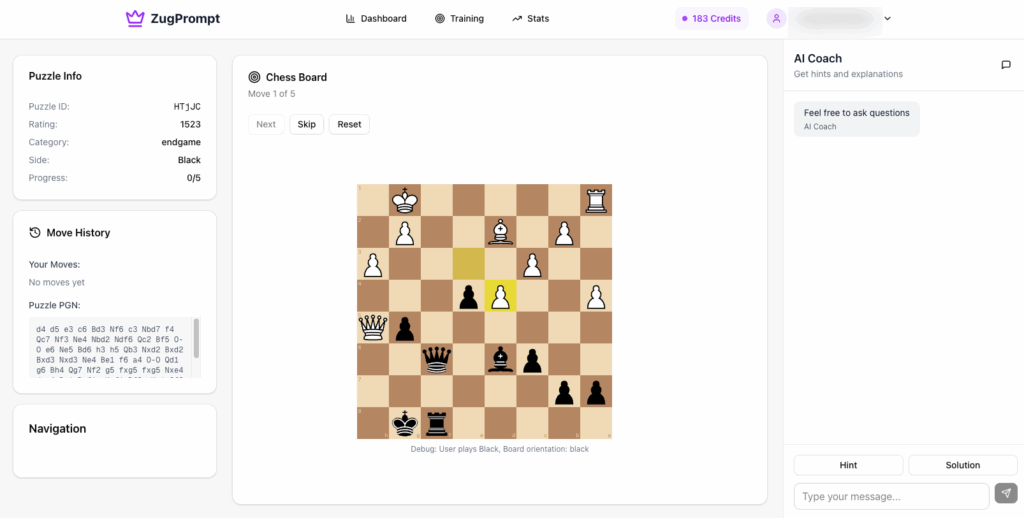Zugprompt Product development

Overview
When we set out to create a smarter way to train chess players, the goal was simple — build a platform that doesn’t just give puzzles, but thinks with you.
We designed and developed a SaaS-based chess training platform that combines AI-assisted learning, automated user analytics, and a seamless web experience.
The result: an intelligent coaching environment where players can solve puzzles, discuss their reasoning with an AI assistant, and track their progress — all within a clean, intuitive interface.
The Idea
The core idea started with a question:
What if players could not only solve puzzles but also talk to an AI about their thought process?
We wanted to turn traditional chess training into an interactive, feedback-driven experience. That meant combining AI chat capabilities, personalized puzzle systems, and a data-driven analytics dashboard — all accessible through a SaaS model with flexible credit-based usage.
From there, we focused on turning this concept into a product that could scale — balancing AI innovation with the realities of startup development.
Design & Product Development
We began with Figma, building out a clear user flow and a minimal yet dynamic interface that would keep the focus on learning and interaction.
Each user action — from solving a puzzle to chatting with the AI — was designed to feel fluid and connected.
The design language was built using ShadCN UI, chosen for its clean aesthetic and flexible component architecture that pairs perfectly with Next.js.
This phase wasn’t just about visuals — it was product design in the full sense: identifying user needs, defining core functionality, and translating it into an intuitive experience.
Technical Stack & Architecture
Our development stack was intentionally lean yet powerful:
-
Next.js for fast, scalable frontend and backend integration
-
Supabase for authentication, database, and storage
-
n8n for automations and backend workflows
-
ShadCN UI for consistent and accessible interface design
-
Figma for product design and prototyping
The architecture allowed for rapid iteration, secure data handling, and automated workflows that kept the platform running smoothly behind the scenes.
AI Development & Automation
The real innovation came with the integration of AI.
We developed an AI conversation layer that lets users analyze their puzzles, ask for hints, or discuss strategy using credits tied to their plan.
Each interaction was designed to feel like a personal training session — an assistant that adapts to the player’s level and understanding.
To make the experience scalable, we used n8n automations to manage user credits, trigger email sequences, and log activity data automatically.
This reduced manual overhead and helped create a truly autonomous SaaS product.
Analytics & Pro Features
For advanced users, we introduced a Pro Plan with extended AI credits and access to performance analytics.
These analytics visualize progress over time, puzzle-solving accuracy, and key areas for improvement — helping players measure their growth quantitatively.
By integrating Supabase’s real-time capabilities with visual dashboards, we transformed simple puzzle data into actionable insights.
Outcome
The final product is a polished, scalable web platform that merges AI solutions with modern web development.
From concept to launch, every step was guided by the goal of making chess training smarter, more engaging, and more personalized.
This project reflects our process-driven approach to AI product design — blending creative ideation, technical execution, and automation into a cohesive digital experience.
🔗 Visit the platform: zugprompt.com

